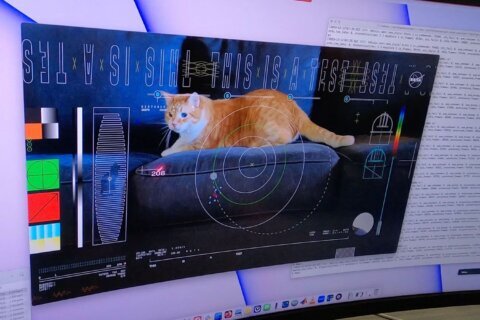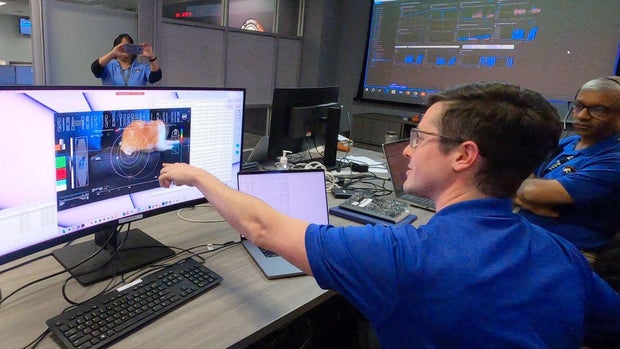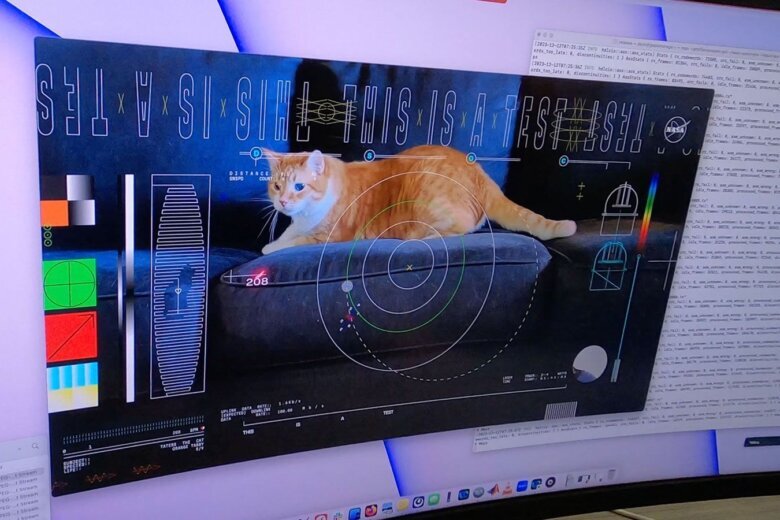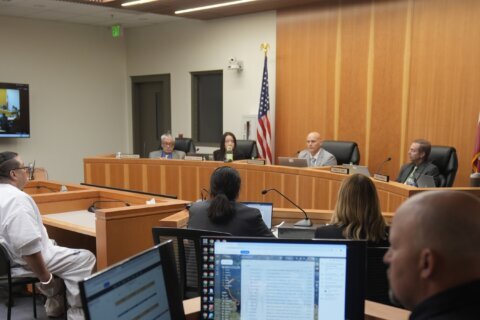
NASA beamed ultra-high definition video of a cat named Taters back to Earth from nearly 19 million miles away, the space agency said Monday.
The 15-second cat video was sent to Earth as an experiment for NASA’s Deep Space Optical Communications. The space agency hopes to one day stream very high-bandwidth video and other data from deep space, enabling future human missions beyond Earth’s orbit.
How did a video of Taters the Cat get to space?
While animals, including a cat named Félicette, have actually been to space, Taters is not one of them. A Jet Propulsion Laboratory employee owns the orange tabby, according to NASA.
The video of Taters chasing the red dot of a laser pointer was uploaded to NASA’s $1.2 billion Psyche asteroid probe before it was launched in October. Psyche is on a six-year, 2.2-billion-mile voyage to a rare, metal-rich asteroid that may hold clues about how the cores of rocky planets like Earth first formed.
The Taters video transmission was carried out on Dec. 11 en route to the asteroid.
“One of the goals is to demonstrate the ability to transmit broadband video across millions of miles. Nothing on Psyche generates video data, so we usually send packets of randomly generated test data,” Bill Klipstein, the tech demo’s project manager at JPL, said. “But to make this significant event more memorable, we decided to work with designers at JPL to create a fun video, which captures the essence of the demo as part of the Psyche mission.”
How did the video of Taters the Cat get sent to Earth?
A piece of equipment called a flight laser transceiver was used to beam the video as an encoded near-infrared laser from Psyche to the Hale Telescope at Caltech’s Palomar Observatory in San Diego County, California, NASA said.
The record-setting transmission distance is about 80 times the distance between Earth and the moon and it took just 101 seconds for the laser to reach Earth, NASA said.

The video was then downloaded and each frame was sent to NASA’s Jet Propulsion Laboratory in Southern California, where it was played in real time.
“Despite transmitting from millions of miles away, it was able to send the video faster than most broadband internet connections,” Ryan Rogalin, the project’s receiver electronics lead at JPL, said. “In fact, after receiving the video at Palomar, it was sent to JPL over the internet, and that connection was slower than the signal coming from deep space.”
What does this mean for future space exploration?
The video’s successful transmission marks a “historic milestone,” according to NASA. As Psyche continues toward the main asteroid belt between Mars and Jupiter, high-data-rate signals will continue to be sent back toward Earth. Greater communication capability from deep space could help pave the way for sending humans to Mars.
“This accomplishment underscores our commitment to advancing optical communications as a key element to meeting our future data transmission needs,” NASA Deputy Administrator Pam Melroy said. “Increasing our bandwidth is essential to achieving our future exploration and science goals, and we look forward to the continued advancement of this technology and the transformation of how we communicate during future interplanetary missions.”








